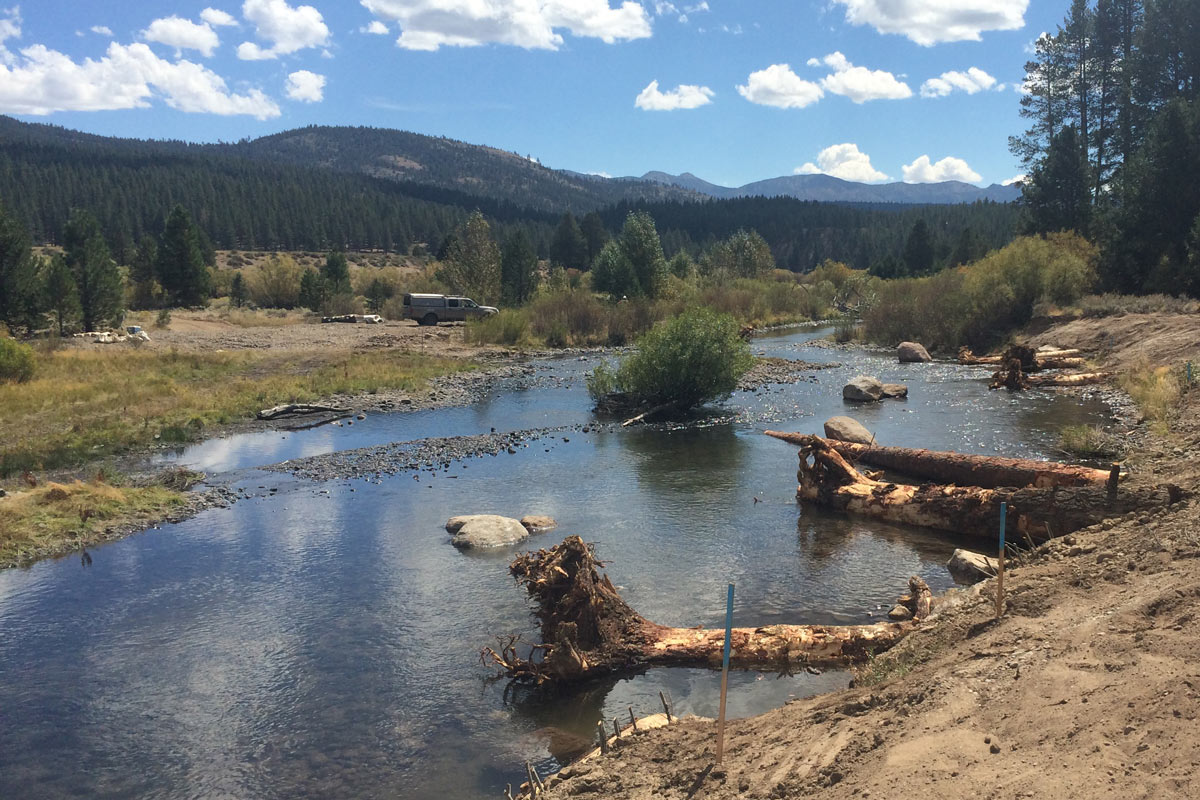Balance Hydrologics staff have extensive understanding of the important role of streamwood placements in restoration projects to increase habitat, passage potential, and hydraulic complexity in streams. At the same time, we understand safety and flood control needs of a community with respect to woody materials that can transport downstream and create woodjams at locations where infrastructure may be at risk.
We have expertise in drawing streamwood (logs, logs with rootwads) into CAD for use in 2D model environments. Interpretation of 2D model results includes direct assessment of channel hydraulics (depth, velocity, shear stress) as well as generating habitat suitability metrics for fish species of interest (such as salmonids) and fish passage probabilities. These tools are used to guide development of stream restoration project objectives, whereas wood stability calculation worksheets provide quantitative support for streamwood placements. When project objectives require more constrained restoration techniques, we generally utilize more robust bio-engineering structures such as crib-walls.
We have conducted many woodjam assessments for municipalities and private land owners, which have led to safer conditions while also preserving natural site conditions when feasible. Field site visits, including image capture drone technologies if desired, are used to visually assess woodjams and their potential to cause infrastructure, flooding, or safety issues at or downstream of a jam location. Discussions with agency personnel and private owners on the merits of as few modifications to woodjams as possible are a key initial step, then recommendations for removal, modifying, or leaving in place depend on client needs and objectives.















